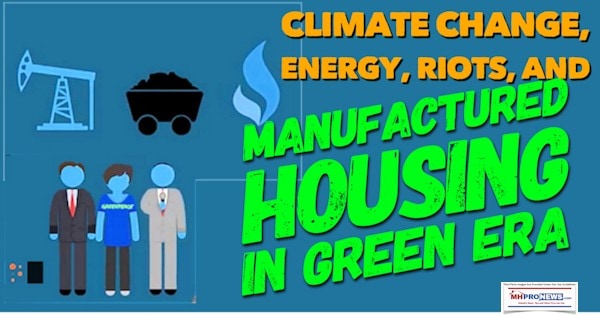
“If you don’t like the weather in Oklahoma,
wait a minute and it’ll change.”
– Will Rogers (1879-1035)
There have been story lines in entertainment and news medias since at least the early 1990s about climate change or “global warming.” That the climate changes is a matter of fact. Temperatures in most places tend to rise after dawn, and tend to cool after sunset. It has been so for thousands of years before industrialization. The earth has for ages gone through periods of warming and cooling.
Some prudent questions therefor ought to include:
- how much of climate change is natural,
- how much of it is caused by human activity, and
- how much of that human activity is harmful?
- How does this topic impact manufactured homes and other forms of factory-built housing, in this ‘green’ era?
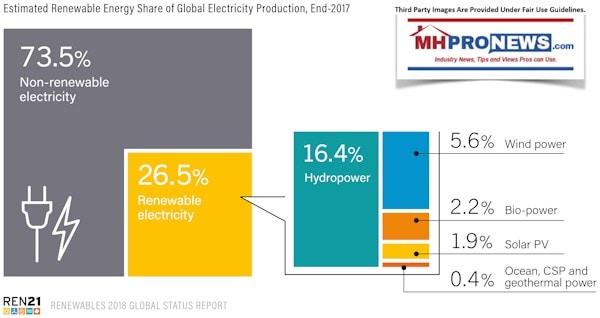
Manufactured Housing in the Green Era
By way of disclosure, on the marketing side of our operations, we have pointed to the greener side of manufactured housing for all of the 2000s and into the 2010s.
Manufactured housing is greener in almost every sense than conventional construction. Kevin Clayton of Clayton Homes is correct about the relatively low amount of wasted material that any factory-builder achieves, roughly two drums per housing unit. Lindsey Bostick at Sunshine Homes has touted LED lights and other green, energy-saving features in her own manufactured home with understandable pride and enthusiasm.
It is one of those points where independent or larger producers of manufactured homes or modular housing can agree upon.
In a state like California, energy-savings is mandated for builders. Steve Lefler is among those who has been promoting green modular, manufactured, and ‘tiny’ housing in his state for factory-builders, and their own company. DOE Energy standards for HUD Code manufactured homes has been a hot topic for years.
Green is in.
But none of those factoids answers the question, how much of climate change is caused by human activity? Or how much harm is caused by so-called greenhouse gas or other emissions? What are the practical alternatives?
A popular radio talk show personality on 1430 AM joked some years back about coal-powered cars and trucks. Coal? Yes, because electric cars use electricity. At that time, roughly half of the electric capacity in the U.S. was generated from coal-fired electric plants. By 2015, that share of coal-fired electric plants was down to about 30 percent, per the Washington Post.
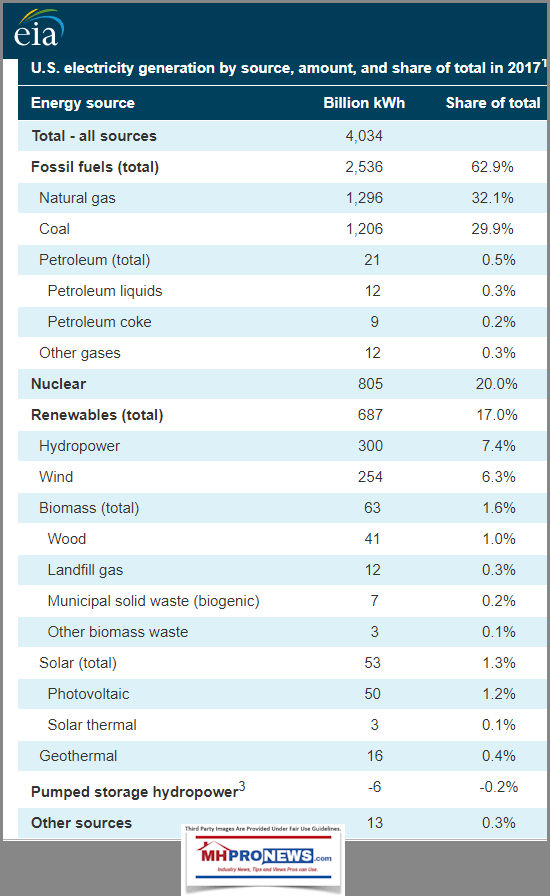
Windmills have become more popular as a form of energy production. But ecologically serious people recognize that those wind powered turbines kill birds. That has consequences in nature too. Solar power is not without its own environmental risks, nor is it as easy or as cost effective to use in various climates as others power sources can be.
In France, there have been riots for days as a result of the French President Emmanuel Macron government’s efforts to impose higher fuel taxes. Gas in France is already about $7.06 dollars a gallon, much of which are taxes. Fuel will go higher under Macron’s ‘anti-climate change’ plan. Compare their cost in France for gas to about $2.70 average per gallon here in the U.S.
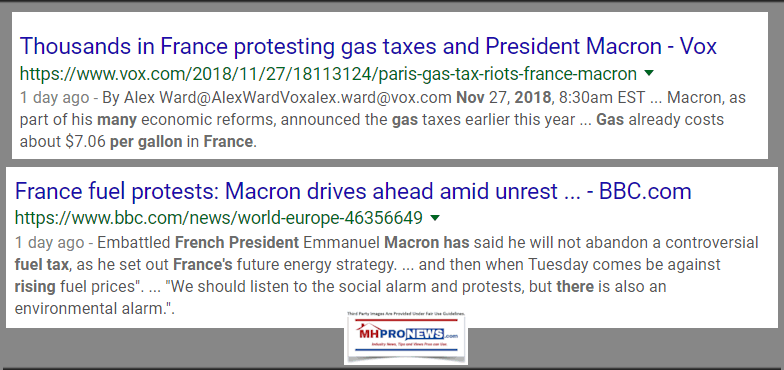
Would Americans riot too if gas prices suddenly shot up to over $7 a gallon?
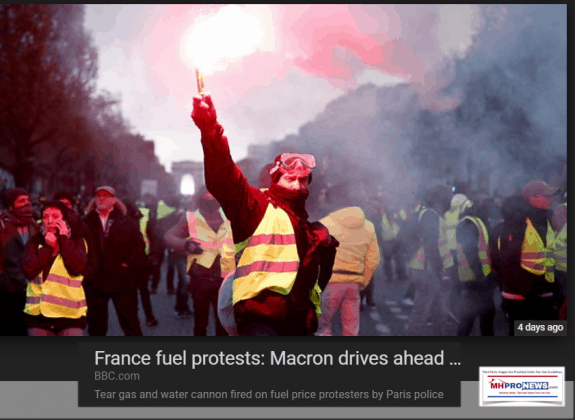
Nuclear energy is a potential option that isn’t as discussed or used as it was prior to Chernobyl, Three Mile Island or the Fukushima Daiichi nuclear disaster in 2011. But nuclear power is still a part of the U.S. and other nations’ energy mix.
It is natural gas here in the U.S. that to a significant degree surged to take up the slack of declining coal use. See the infographics for details.
People might enjoy roughing it on a camping trip for a few days. But millions of Americans camp in RVs. They use fuel or electricity almost the entire trip on such an outing. The point is that not many want to go back to the pre-industrial or pre-electric energy era. No one makes the news demanding a return to reading by candlelight.
To put this into a more industry-specific context, no factory works without energy.
So, energy costs are a built-in reality for HUD Code manufactured home or modular housing production. Energy costs are also part of site-building costs and are likewise a factor in for cost in producing 3D printed housing too.
Rephrased, higher fuel costs could dampen the sale of all housing, including manufactured housing.
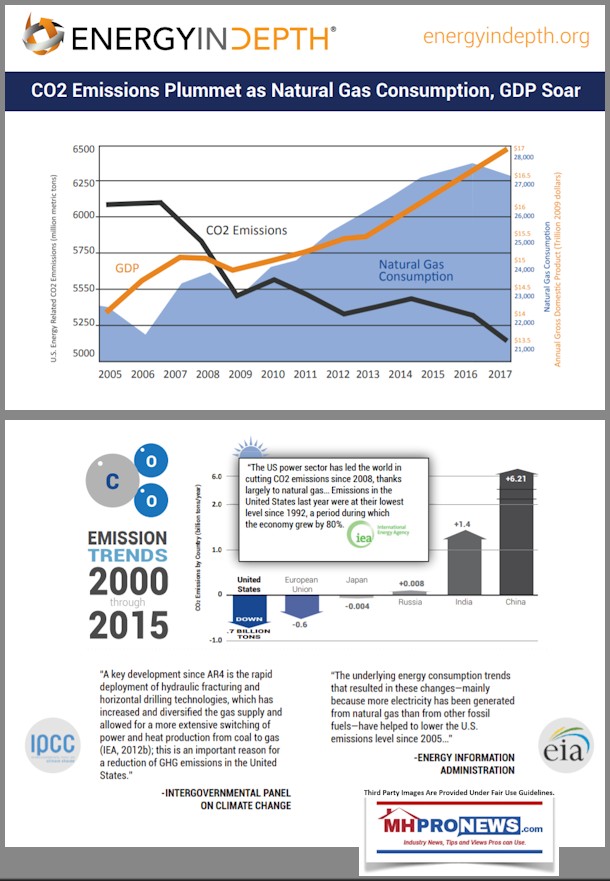
With The Above Backdrop
So, there are a string of facts, such as those noted above, that must be recognized before getting into the debate over climate and energy.
It should also be noted that while this issue of climate has become a political football, kicked or tossed around by the major parties, that neither major party wants dirty air or dirty water.
When one major party, for example, demonizes their opponents inaccurately portraying falsehoods about energy or climate, that is unjustified. Such stratagems as “smear and fear” perhaps reveals more about those who employ underhanded tactics than it does about those whom they wrongfully target.
The word “conservative” has become negative to those on the political left. Why? Isn’t the essence of green about the conservation of the planet and protecting natural resources?
Let’s note that low-cost energy is an economic driver for business, including manufactured housing. Lower energy costs also translates into more purchasing power, especially for those with a limited income.
With those thoughts, we now introduce the Praeger University video below on Climate Change, What Do Scientists Say?
The video rapidly explores the scientific, political and other factors in the climate change discussion, as presented by an atmospheric physicist.
While the nation isn’t all like Oklahoma, the whit and wisdom of Will Rogers has been adapted to other parts of the U.S. on this topic of climate. Don’t like the weather? Wait five minutes, quip some, and it will change. That’s “News through the lens of manufactured homes, and factory-built housing” © where “We Provide, You Decide.” © ## (News, analysis, and commentary.)
NOTICE: Readers have periodically reported that they are getting a better experience when reading MHProNews on the Microsoft Edge, or Apple Safari browser than with Google’s Chrome browser. Chrome reportedly manipulates the content of a page more than the other two.
(Related Reports are further below. Third-party images and content are provided under fair use guidelines.)
1) To sign up in seconds for our MH Industry leading emailed news updates, click here.

2) To pro-vide a News Tips and/or Commentary, click the link to the left. Please note if comments are on-or-off the record, thank you.
3) Marketing, Web, Video, Consulting, Recruiting and Training Re-sources

Related Reports:
MHPro Alert: DOE Issues Manufactured Housing Energy Rule RFI
Ford and Toyota Teach Manufactured Housing Professionals and Investors
Google Employees Go Public, Protest Controversial “Project Dragonfly”
Bull Run, Part II Ahead? Says Raymond James Executive, Plus MH Market Updates

























